Acacia is a genus of shrubs and trees from the Fabaceae family, first documented by Linnaeus in 1773 in Africa. Acacia flowers are white and have a pleasant aroma. The fruits are flat pods, similar to bean pods, ripening at the end of summer. Acacia begins to bloom after it reaches 5 years of age. The leaves are oval and there are up to 21 arranged per stem, usually odd-numbered. At the base of each stem there are 2 thorns that protect the tree from animals.
An example of a species belonging to the genus is false acacia (Robinia pseudoacacia). It is native to North America.
False acacia is a branching tree growing up to 65.5 ft (20 m) tall, with a grey brown cracked bark. The leaves are compound, with 2 thorns at the base of each. The flowers are white, fragrant and clustered in drooping racemes (grape-like flower clusters). The fruit is a brown bean containing several dark brown seeds. Acacia is generally known as an aromatic, decorative plant. Further, it is a tree that improves soil quality, while folk medicine recommends it as a remedy.
History of Acacia
According to mythology, the Egyptian god Horus sprung forth from acacia. What's more, this tree is considered to be the home of the goddess Neith. Egyptians believed that both life and death could be found in acacia. For Egyptians, acacia symbolized the sun, rebirth, immortality, as well as a new beginning. In the Mediterranean nations, acacia symbolized not only life but platonic love. It was believed that acacia thorns could ward off evil spirits.
Since ancient times, acacia has been a symbol of purity. For millennia, the tribes that roamed the Arabian desert paid homage to this plant, which they considered the mother of all trees. According to legend, if one breaks the branches of acacia, they will die within 1 year. According to the Bible, acacia wood (Gopher wood) was used to build Noah's Ark. This is why acacia is considered holy among Jews. It is a symbol of the funeral and mourning. Acacia branches are also used in the rituals of secret societies.
Composition of Acacia
Acacia contains essential oils. The bark contains the toxic toxalbumins, alkaloids, dyes, while the inner bark (during August) also contains amygdalin, globulin, phytosterol, stigmasterol and an enzyme that breaks down urine.
Growing Acacia
Acacia usually grows in sunny areas. It can withstand high and low temperatures, as well as handle city pollution quite well. It develops best in fertile soils. If the soil is chalky, the tree gets sick and develops poorly.
Acacia grows very rapidly. It reaches heights of up to 82 ft (25 m), and up to 100 years of age. Using its well grown and deep roots, it absorbs food from the soil. The roots of acacia are very capable of giving off shoots if the trunk is cut off. The wood does not rot easily, lasting up to 80 years out in the open. Often, acacia is grown to support steep slopes.
Collecting and Storing Acacia
The flowers of false acacia that have not yet bloomed are used for remedies. They need to be collected during May and June. When picking they must not be crushed. Dry them in a shady and ventilated area or in a dryer at a temperature of 100°F (40 °C).
When processed in this way, the herb has a white or light yellow color. If it is not fully dried, it darkens, blackens and becomes unfit for use as a remedy. Besides by color, well-dried acacia flowers can be recognized by their pleasant aroma and sweet taste.
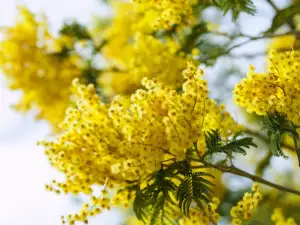
The fruits and bark of young acacia branches are used, as well as its roots. Leaves are picked before bloom - April; the fruits - in August, September; and the bark of the branches in early spring - February, March.
Benefits of Acacia
Acacia is popular mainly as an aromatic, decorative plant. Additionally, it is a tree that improves soil incredibly well, while folk medicine recommends its use for healing purposes. The flowers and leaves of false acacia are used to treat stubborn cough. They also provide pain relief and have a styptic action. They have a very beneficial action for increased stomach acidity. Folk medicine recommends the herb for gastrointestinal problems - burping, acids, nausea, pains, vomiting.
Along with doctor prescribed medications, acacia can be used as another form of aid for gastritis therapy, stomach and duodenum ulcers. It's also used to treat throat and head pains, high blood pressure, irregular periods, rheumatism. In the majority of cases, this herbal remedy acts as an auxiliary treatment, not the primary.
Acacia is a valuable nectariferous genus. Bees collect nectar from it in the months of May-June and make acacia honey from it. Older trees yield more honey. This is because even in drier weather the well-developed and deep-reaching root system of acacia reaches the layers of soil containing more moisture and thus secretes greater quantities of nectar.
Characteristic of acacia honey is that it takes a long time to crystallize - up to 2 years. Some of the first honeys obtained during the year in many regions of the world are pale-green in color. In any case, acacia honey strengthens the whole body and protects against diseases of the respiratory tract and digestive system.
Acacia wood can be used successfully in furniture making. The wood's high abrasion resistance makes it suitable for flooring. Due to its high durability, acacia wood is an excellent building material.
It's used to make sheathing for boats, to make posts, railroad ties, mine props, wrapping, tool handles and others. It's widely used in barrel making and for the making of containers for the chemical industry. Veneers produced from it have a beautiful texture but spots often form on the surface in the process - this drawback can be fixed by further sanding. In some countries, acacia wood is a common material used to make wood grain tiles and cellulose ceiling tiles.
Folk Medicine with Acacia
Traditional folk medicine recommends an infusion of false acacia for cough, stomach ulcers, headache, trigeminal neuralgia, rheumatism, typhus, influenza, stomach bleeding. Topically it may be used for rinsing in case of toothache. Soak 1 tbsp of the herb for 2 hours in 1 1/5 cups (300 ml) boiling water. Drink 1 wine glass of the strained infusion 3 times a day before meals.
Dangers of Acacia
The leaves and bark of acacia are toxic. Treatments with the herb need to be appointed and controlled by a doctor - using the flowers is preferable since they are considered more harmless.
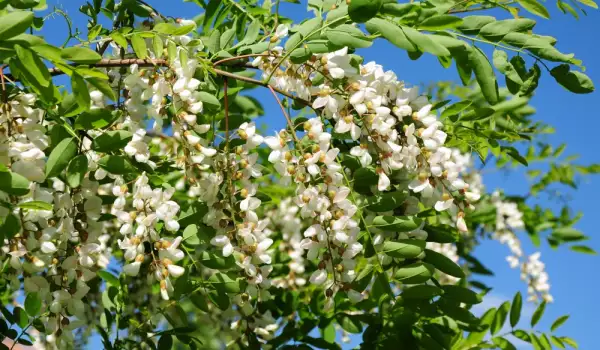
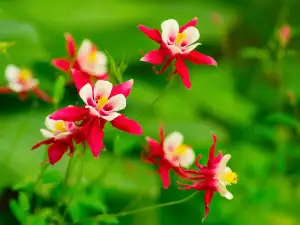

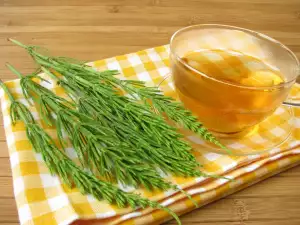
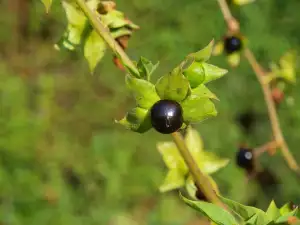
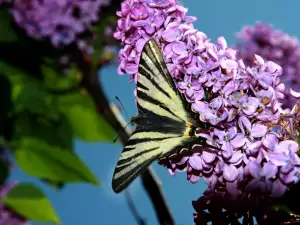
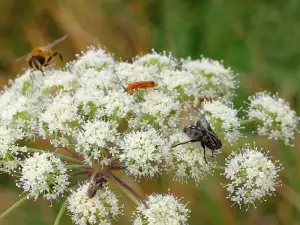

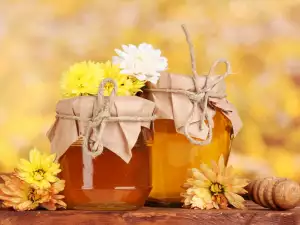
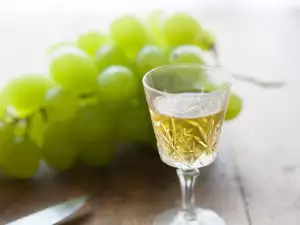






Comments